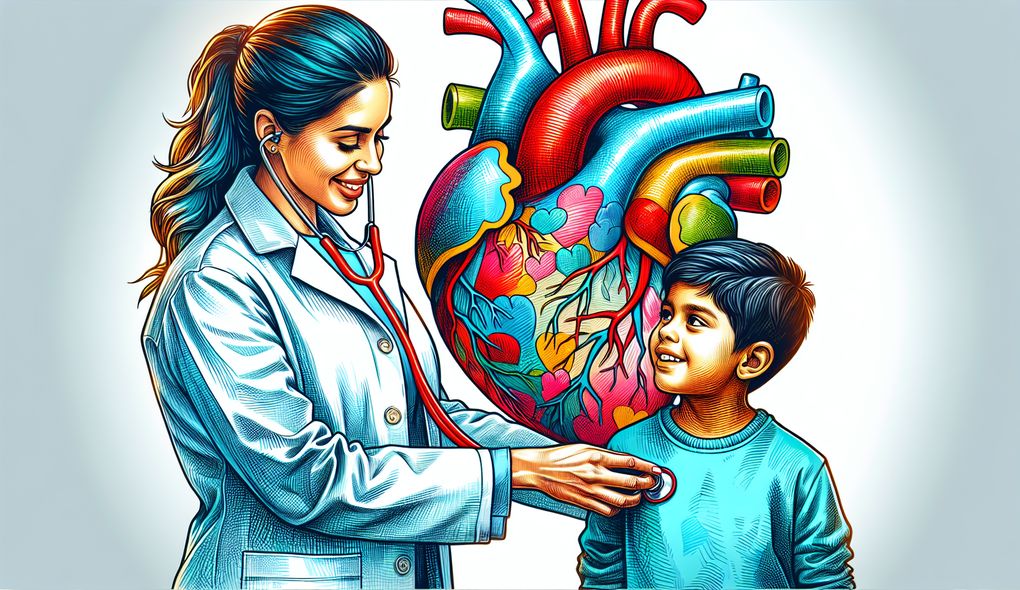Tell us about a time when you had to communicate complex medical information to a child or adolescent patient in a way they could understand.
INTERMEDIATE LEVEL

Sample answer to the question:
I had the opportunity to communicate complex medical information to a 12-year-old patient who was diagnosed with a congenital heart defect. I explained the condition using simple language and visual aids, such as diagrams and animations. I also involved the patient's parents in the discussion to ensure they understood the information as well. We discussed the different treatment options available and the potential risks and benefits of each. I also took the time to answer any questions the patient had, addressing their concerns and ensuring they felt comfortable with the information. By the end of the conversation, the patient had a clear understanding of their condition and the treatment plan.
Here is a more solid answer:
In my role as a Pediatric Cardiologist, I encountered a case where I needed to communicate complex medical information to a 13-year-old patient with a rare heart condition. To ensure the child understood, I used age-appropriate language, avoided medical jargon, and used visual aids such as diagrams and models. I created a safe and welcoming environment where the child and their parents felt comfortable asking questions. I actively listened to their concerns and addressed them with empathy and compassion. I also involved the child in their treatment plan, allowing them to make choices and decisions. By the end of our conversation, the child had a clear understanding of their condition, the treatment options, and the potential outcomes.
Why is this a more solid answer?
The solid answer expands on how the candidate communicated the complex medical information using age-appropriate language and visual aids. It also emphasizes the candidate's empathy and compassion towards the child and their family. The answer could be further improved by providing specific examples of the visual aids used and the choices given to the child in their treatment plan.
An example of a exceptional answer:
During my time as a Pediatric Cardiologist, I encountered a complex case involving a 10-year-old patient with a congenital heart defect. To communicate the information effectively, I used a multi-modal approach. I employed visual aids, including interactive computer programs and 3D models, to illustrate the anatomy of the heart and the specific condition affecting the patient. To ensure the child's understanding, I encouraged them to actively participate in the discussion by asking questions and providing explanations in simple terms. I also involved the child's parents, providing them with educational materials and resources to support their understanding and involvement in their child's care. Additionally, I collaborated with the child's school to educate their teachers about the condition, enabling a supportive environment for the child's academic needs. The child demonstrated a good understanding of their condition and actively participated in their treatment decisions, fostering a sense of empowerment and engagement.
Why is this an exceptional answer?
The exceptional answer goes above and beyond in describing how the candidate used a multi-modal approach, including interactive computer programs and 3D models, to communicate the complex medical information. It also highlights the candidate's collaboration with the child's school to support their academic needs and the involvement of the child's parents in their care. The answer showcases the candidate's ability to empower the child and promote their engagement in their treatment decisions.
How to prepare for this question:
- 1. Familiarize yourself with different communication techniques suited for children and adolescents, such as using age-appropriate language, visual aids, and interactive tools.
- 2. Practice explaining complex medical information to someone with limited medical knowledge, adjusting your language and level of detail accordingly.
- 3. Reflect on past experiences where you have successfully communicated complex information to younger patients. Think about the strategies you used and the outcomes achieved.
- 4. Research resources and educational materials available for patients and their families, such as websites, brochures, and videos, that can support your communication efforts.
- 5. Consider the emotional and psychological aspects of communicating complex medical information to young patients and their families, and develop strategies to address their concerns and provide compassionate care.
What are interviewers evaluating with this question?
- Communication skills
- Ability to explain complex information
- Compassionate care

